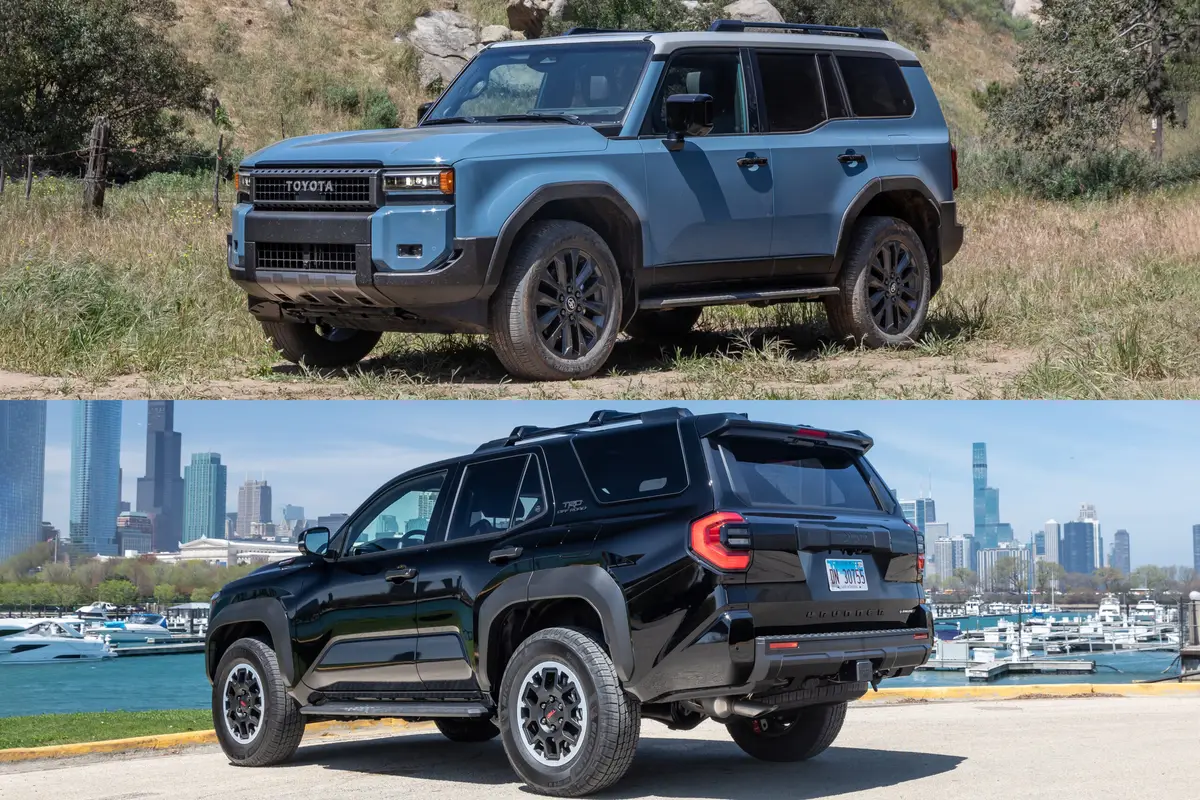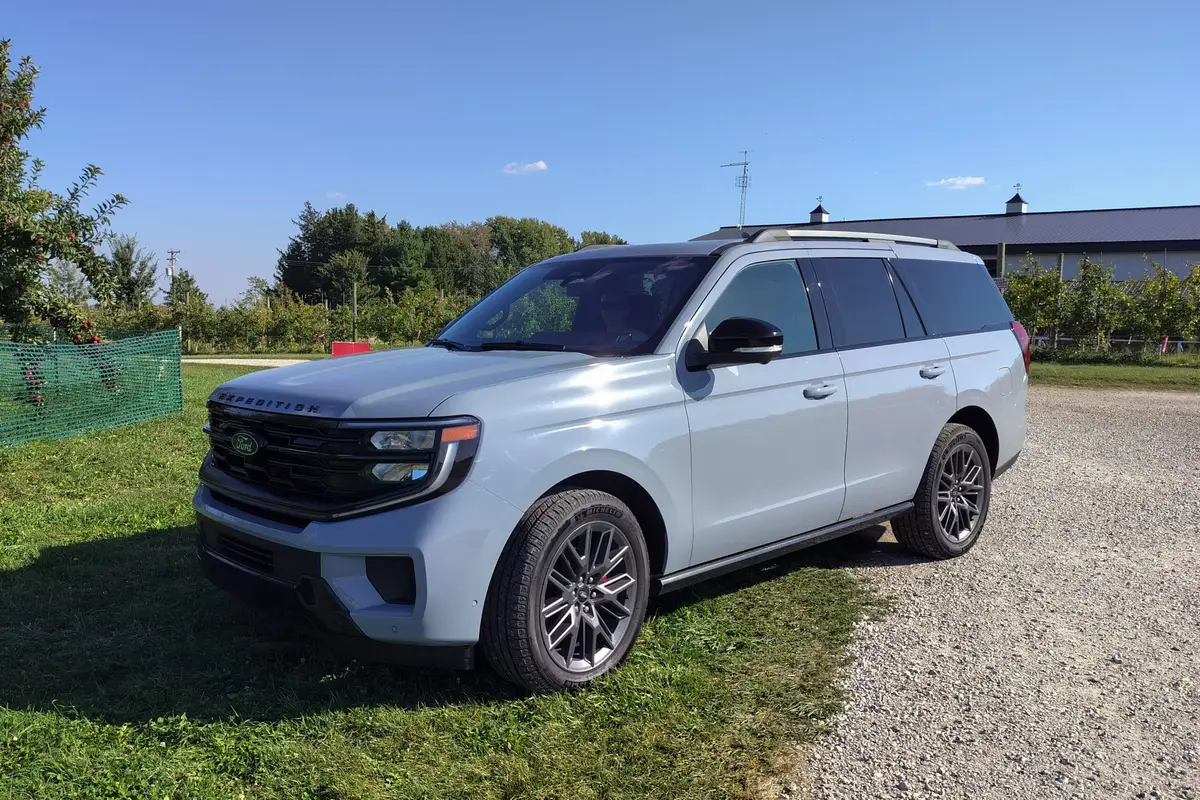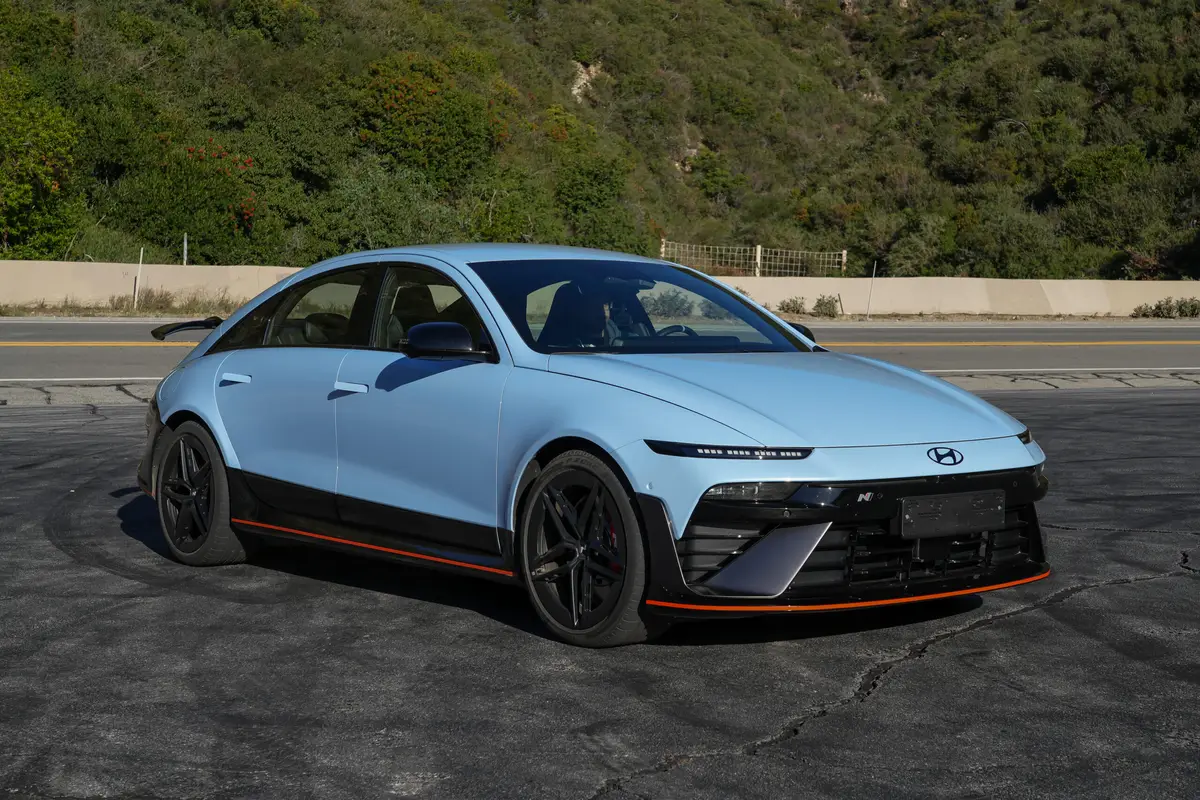2016 Volvo XC90: First Drive

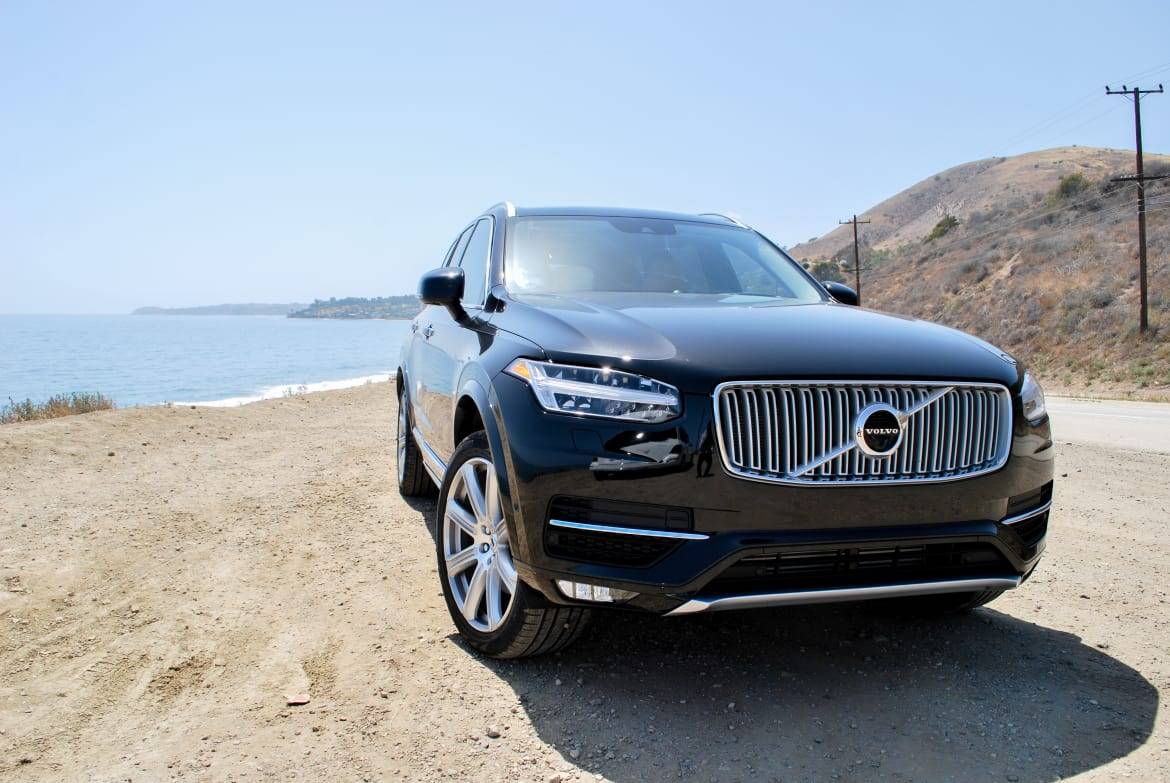
Volvo’s redesigned 2016 XC90 is extremely important for the Swedish automaker. While it has rolled out new models that have impressed us in the sedan (S60), SUV (XC60) and even the wagon space before, it is the three-row XC90 redesign that stands at the top of the brand lineup.
Indeed, this complete redesign is packed to the gills with new features, new technology and new styling including LED headlights patterned after a superhero’s weapon.
Our tester was an XC90 T6 Inscription model, which starts at $55,495 (all prices include destination). The Inscription is the highest of the three trim XC90 trim levels atop the Momentum ($49,895) and the R-Design ($53,895). Both the Inscription and the Momentum will be offered in July, while the R-Design will arrive in October alongside a plug-in hybrid version, the T8. Like most of the vehicles we drive at these events, the Inscription came almost fully loaded adding the Vision ($1,600), Climate with Head-Up Display ($1,950) and Convenience packages ($1,800). On top of that it also offered a Bowers & Wilkins premium sound system ($2,500), 21-inch alloy wheels ($750) and four-corner air suspension ($1,800). Total price with a couple more options: $66,705.
How It Drives
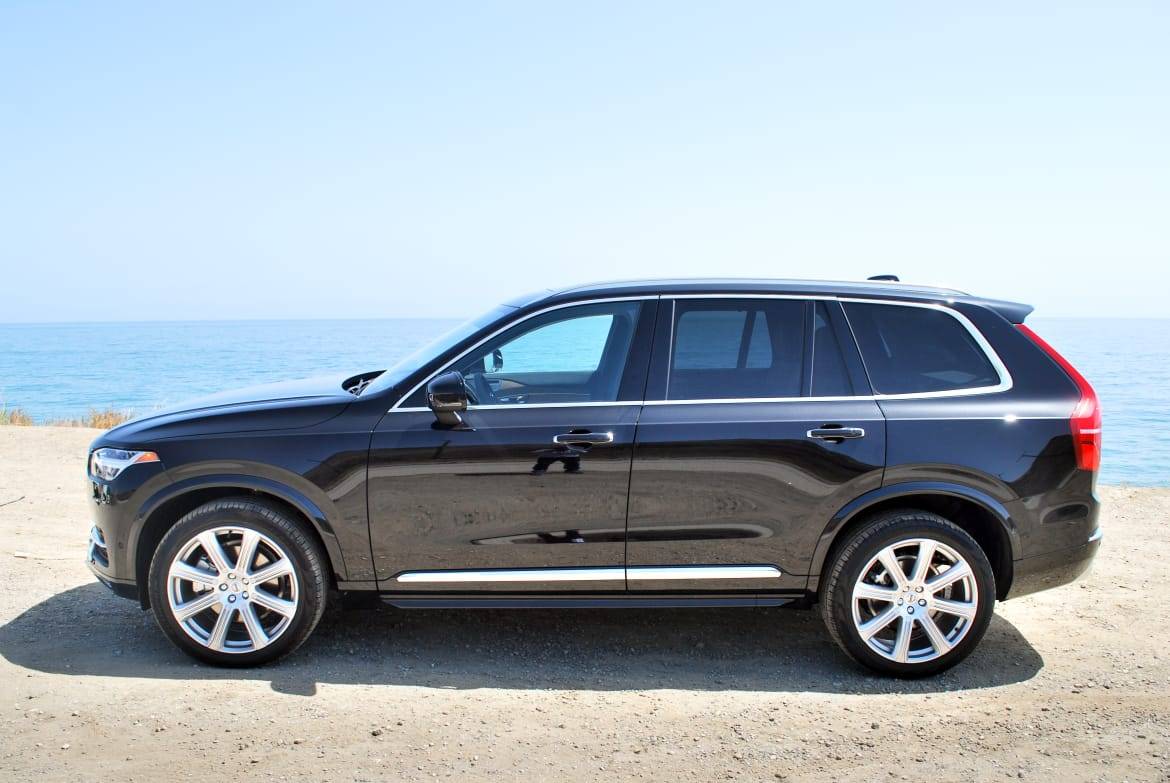
Volvo has ambitious plans to shift all of the cars it sells in the U.S. to essentially one engine architecture: a 2.0-liter four-cylinder that comes turbocharged (called the T5 despite just four cylinders) or the same four-cylinder both turbo- and supercharged (T6) for more performance. Our reviewers already have some experience with the T6 engine found in the XC90 in the smaller S60 and XC60, but this is the first time we’ve gotten to test out the engine on a vehicle of this size. The XC90 has a curb weight approaching 4,400 pounds, and it produces 316 horsepower and 295 pounds-feet of torque.
While I did not expect robust performance out of the XC90, I did expect a little more than was delivered. From a dead stop, it takes the SUV a long beat even with its sophisticated engine setup before it really gets going. Once you are underway, the engine offers plenty of guts for passing and other maneuvers provided you get high enough in the rev range. It feels like a stubborn mule; the power and capability are there, but you have to coax it out. I came away thinking that a larger engine would be nice, but the fuel economy ratings — 20/25/22 mpg city/highway/combined, which is on par with others in the class — might be more important to those who drive it daily.
Our XC90 also came with the optional air suspension, which kept the SUV very level, even on canyon roads. There are three selectable drive modes for regular use — Eco, Comfort and Dynamic — and three steering response options as well. Stick with Comfort. Eco deadens the throttle to the point of misery and Dynamic makes the XC90 behave like a wannabe-sport sedan, with the eight-speed automatic transmission holding on to gears for dear life. There is also a stop-start function to save fuel, which I did not really like, but it is no more intrusive than similar systems found on other cars.
Though the 2016 XC90 does come with standard all-wheel drive, don’t expect to be doing much exploring. The system has a large front-wheel-drive bias for fuel-economy reasons. If traction is lost, up to 50 percent of the power can be shifted to the rear wheels, but the system isn’t designed to be used heavily off-road.
Interior
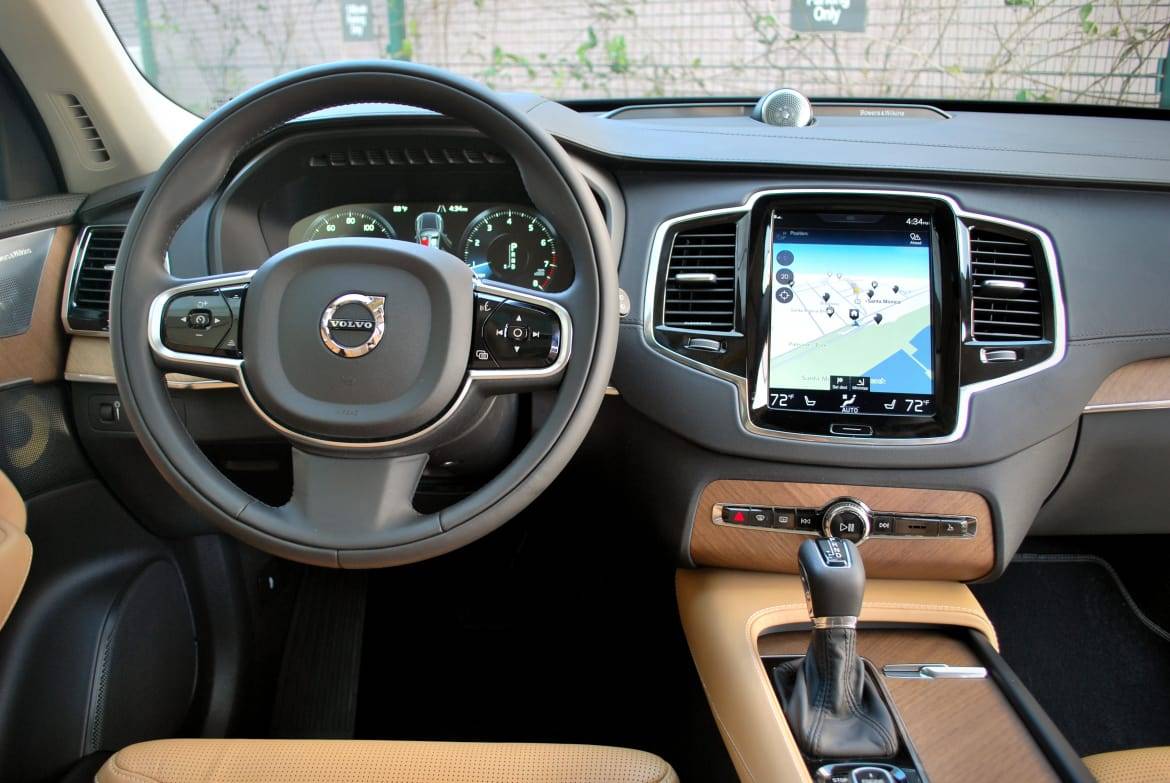
The star of the upscale interior is the center-mounted 9-inch touch-screen (roughly the size of an Apple iPad), which is vertically oriented. Volvo has removed the vast majority of the physical controls from the center console and added them to this screen. Though this gives the interior a modern, minimalist aesthetic, it is a choice that I (along with most Cars.com editors) greeted with a raised eyebrow or two. Call us scarred from the questionable execution we’ve encountered on systems like this in the past.
I am happy to report that this is the best example of a digital system that I’ve used to date. “Button” presses on the screen are met with a quiet click that is strangely satisfying; the system is responsive, fast and intuitive. Part of the reason these systems can be frustrating is that they are generally slower to react compared to touch-screens on smartphones or tablets. This is the first system I’ve found in a car that could keep up with those devices, and it provided a great user experience.
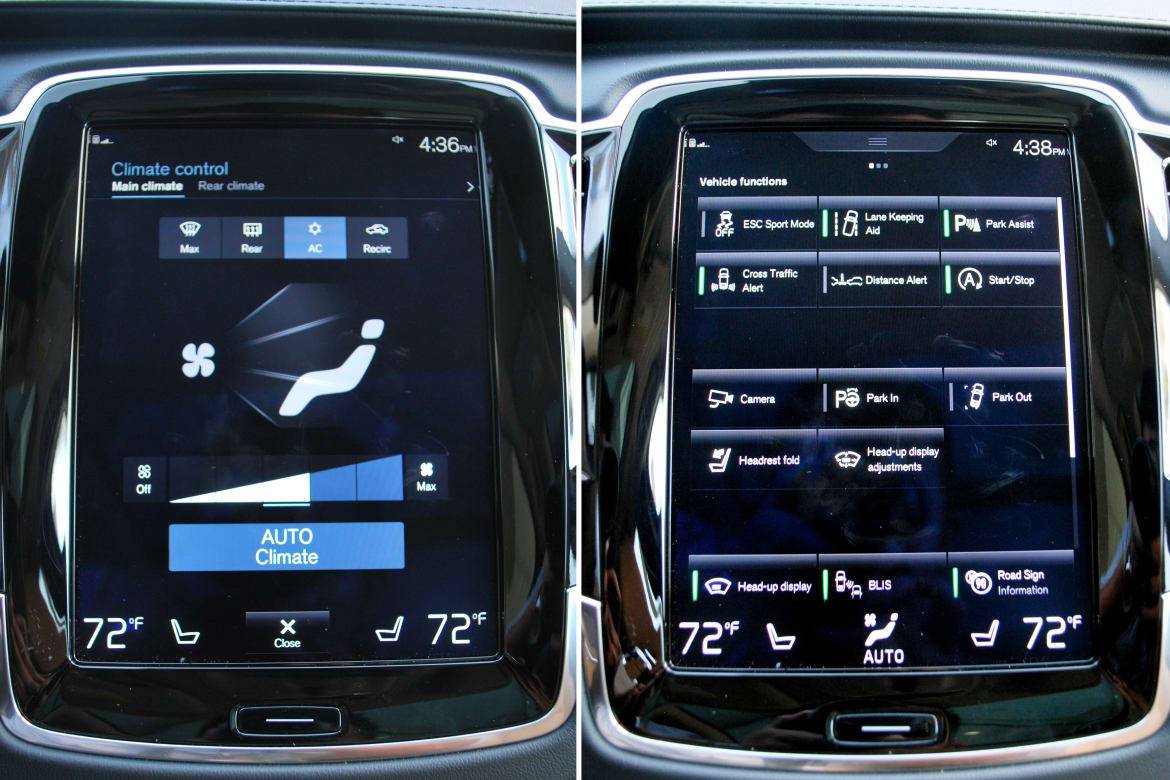
I didn’t miss the physical controls at any point on the trip, which is the best thing I can say about it. Even when wearing polarized sunglasses I found the screen remained sharp and clear. The same can’t be said for the head-up display, which vanishes once the shades come on. The screen also uses an infrared system instead of capacitive touch, which means you can use the system with gloves on — good news for car owners in colder climates.
Fit and finish, materials and styling are all excellent. This is a bona fide luxury SUV, and one of the quietest cars I’ve ever driven to boot. My driving partner for the day and I were able to carry on conversations in soft voices with no trouble hearing one another, even at highway speeds. The front seats are an absolute dream, offering enough support to eliminate fatigue while remaining supple for comfort.
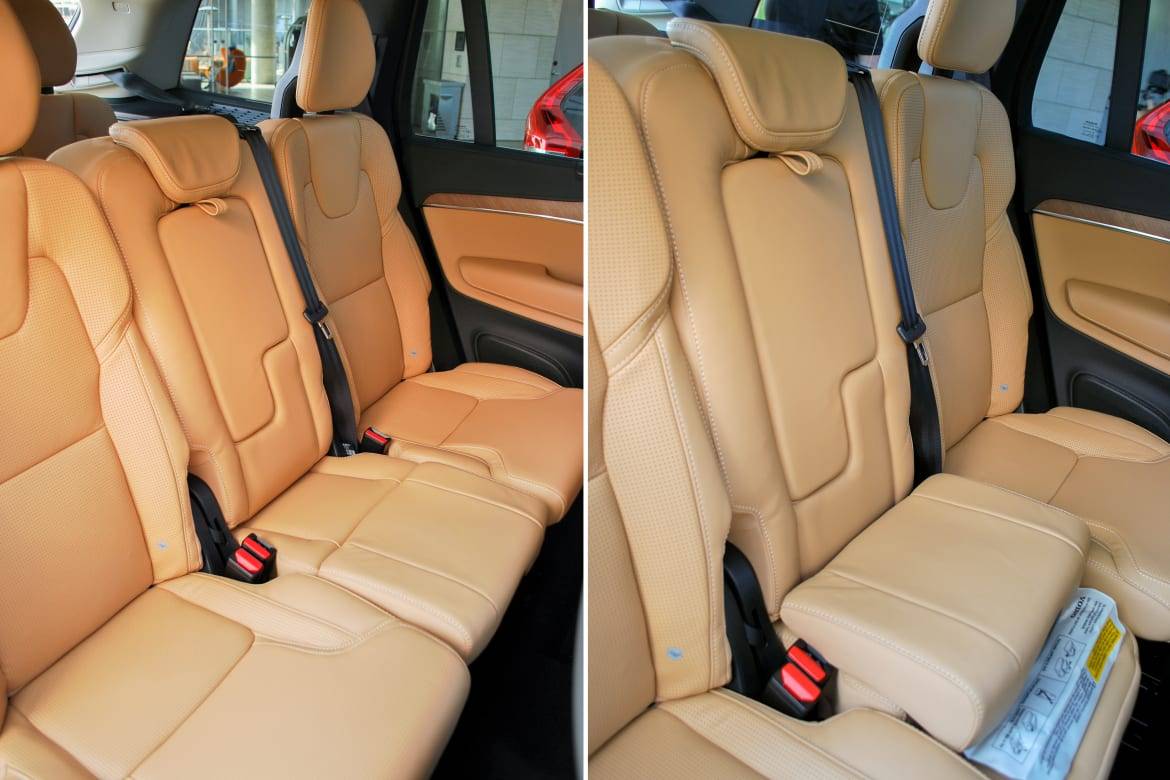
The second-row is split 40/20/40 with the middle seat offering an optional integrated center booster cushion. Each segment slides forward/back and reclines individually, so parents can bring a child in a car seat closer to the front. There is plenty of leg and headroom in the second-row, and thanks to the standard panoramic moonroof, a sense of airiness aided by the slight stadium-style setup.
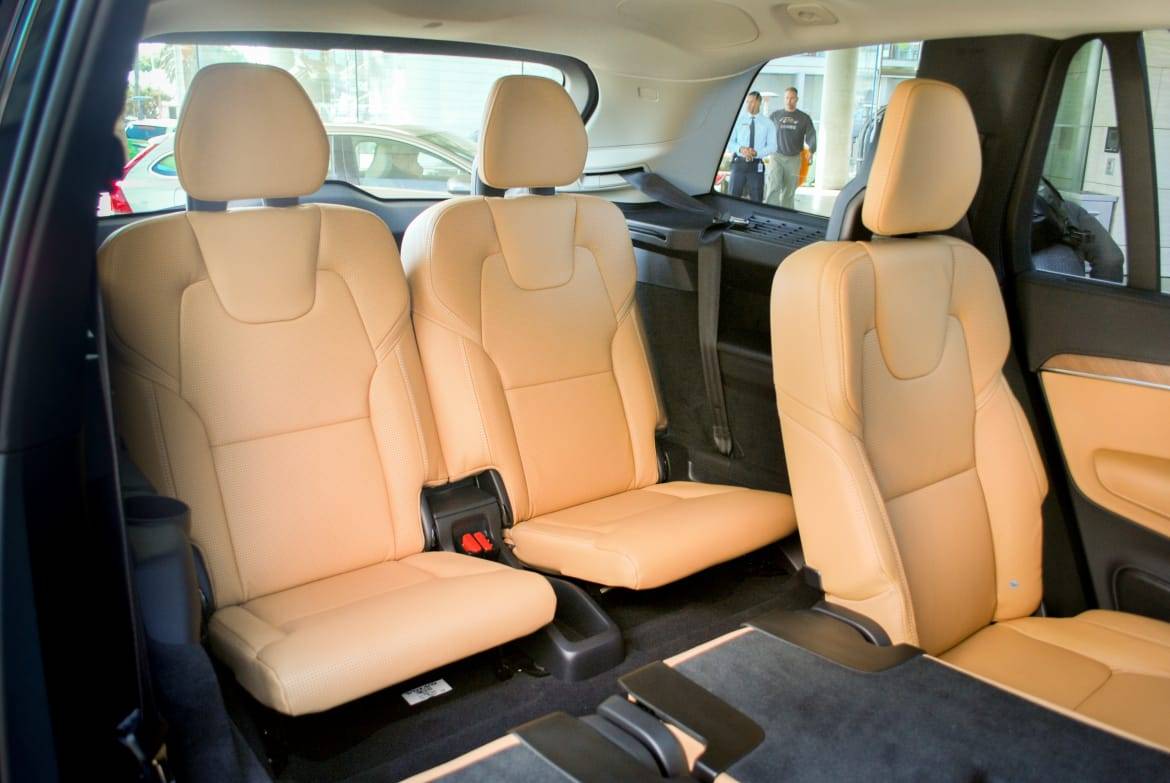
The third row, however, is a different story. Volvo says the third-row seats are meant for passengers 5-foot-6 and shorter, and they were not lying. I tried to cram my almost 6-foot frame back there and while there is plenty of legroom if the people sitting in front of you are cooperative with those sliding seats, headroom is essentially absent. My head was firmly planted in the headliner, even with a kinked neck.
Cargo
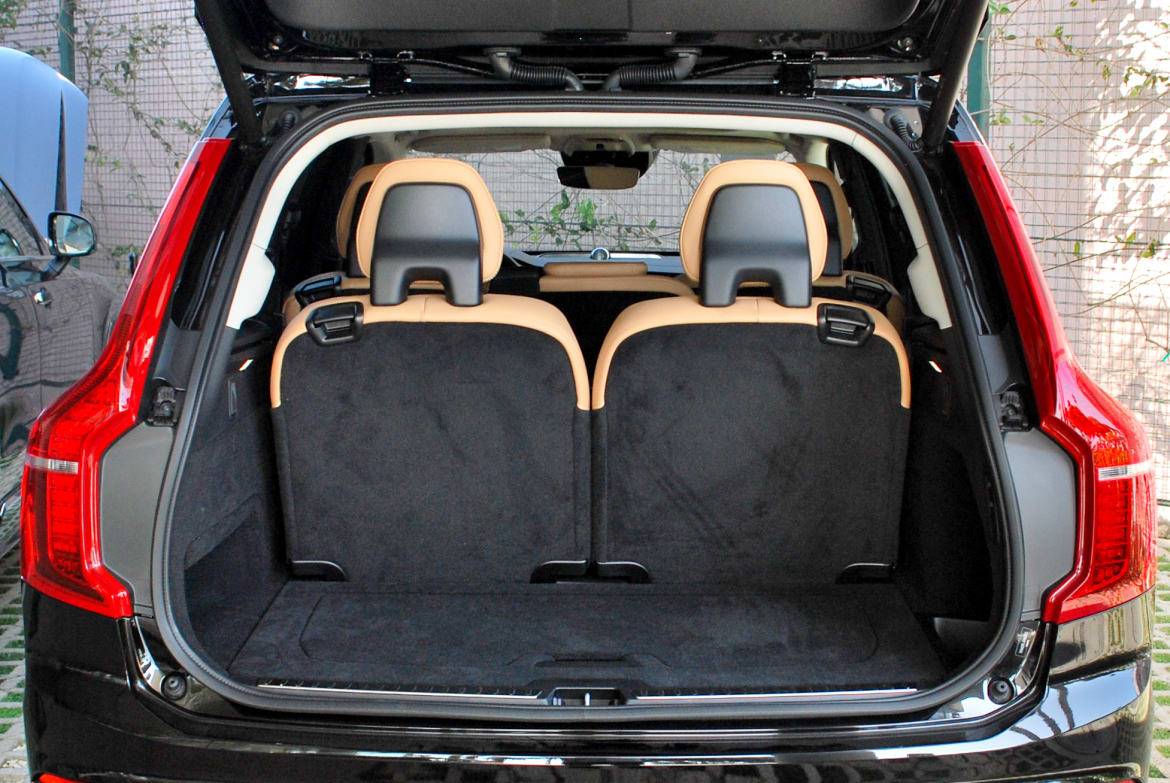
There is 15.8 cubic feet of cargo space behind the third-row, which expands to 85.7 cubic feet with the second and third rows folded flat. There’s a good amount of vertical space as well. There is also a small rear cargo area hidden under a latch that is a good spot to hide valuables like a purse or laptop.
The Land Rover LR4 has 9.9 cubic feet behind the third row, Acura’s MDX has 14.8 cubic feet, the Infiniti QX60 provides 15.8 cubic feet and the Buick Enclave offers 23.3 cubic feet behind the third row.
Safety and Technology
Volvo — as one might assume — has crammed in the safety technology with new features and improvements to existing features, such as enhanced detection of pedestrians and cyclists. There are two new standard safety systems on the XC90 that are world firsts: an auto braking system that will prevent you from making left turns into oncoming traffic and a run-off road protection package. The run-off road package uses the XC90’s sensors to detect when it runs off the pavement and tightens the seat belts to keep occupants in place. Additionally, Volvo engineers also discovered that many of those cars go airborne in run-off situations and land hard, causing spinal injuries. So metal pieces under the front seats have been added that act as crumple zones when the car lands to absorb much of the downward force.
Most of the electronic driver aids default to on, but flick the screen to the right and a menu comes up where you can toggle most of them off with ease. I was afraid that the long list of safety systems would be too intrusive but for the most part I did not notice them; they were helpful reminders instead of nagging ones.
Flip all of the available technology on, however, and there are times where you start to feel more like a passenger than a driver. At speeds less than 33 mph, the XC90 will basically drive itself. As we sat in congestion on the Pacific Coast Highway with the adaptive cruise control with pilot assist turned on, the XC90 automatically kept a safe distance from the car in front of us and took over the steering as well, firmly planting us in the middle of the lane. I may have even found a moment to sneak a glance or two at the sparkling ocean. When speeds rise above the 33 mph limit, the cruise control will still follow at a safe distance but the driver does have to take over most of the steering with the XC90 only making small course corrections.
Summary
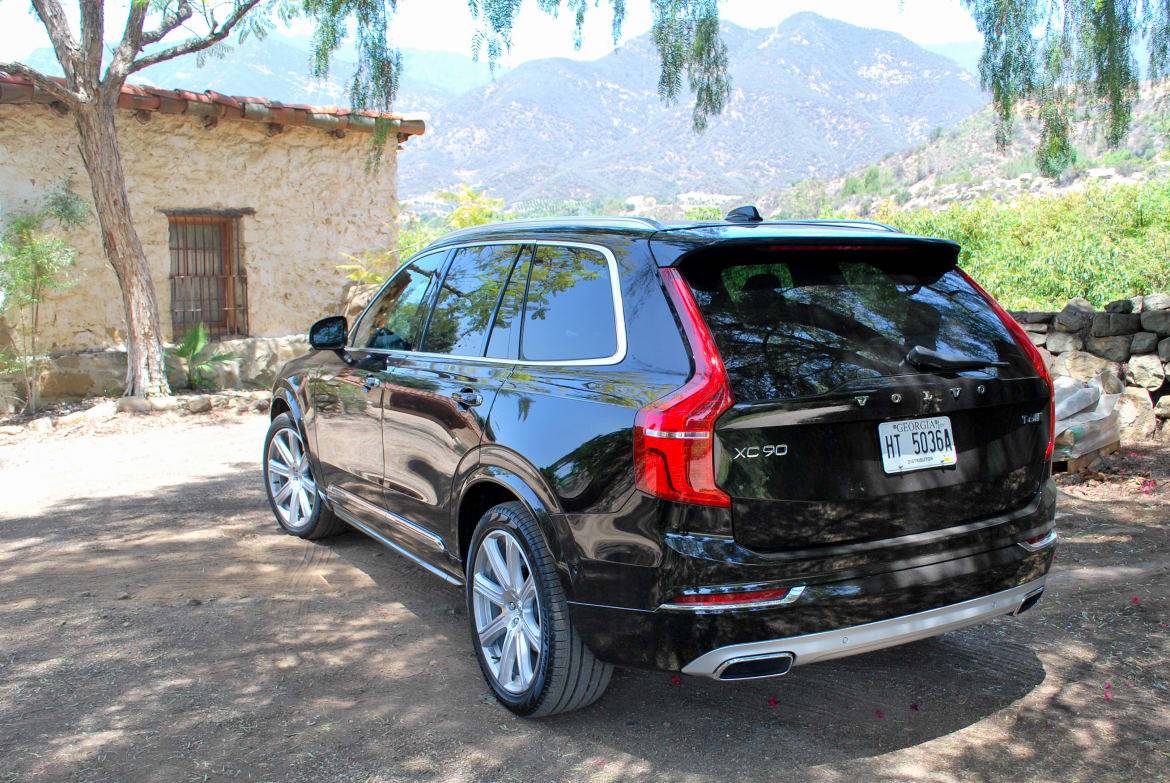
The 2016 XC90 was worth the wait; it offers enough luxury to compete with anything coming out of Germany or Japan, a refined driving experience with the air suspension, and accessible and intuitive technology. Add in the well-executed safety features and the XC90 will hold great appeal for families looking for a luxury vehicle with some utility.

Former L.A. Bureau Chief Brian Wong is a California native with a soft spot for convertibles and free parking.
Featured stories
